History
Omodos is located about 42 kilometres north-west of the city of Limassol, in the geographical region of the wine-making villages. It is built near the west bank of the Cha-potami river at an average altitude of 810 meters. The village is surrounded by tall mountaintops, the tallest of which are “Afames” (1153 m.) and “Kremmos of Laona” (Laona’s Steep, 1092 m.).
The village receives an annual average rainfall of about 760 millimetres; vines and various fruit-trees (apple, plum, pear, peach, and apricot trees) are cultivated in the region. There also are uncultivated areas that are taken over by varied natural vegetation. A small part of the village -in its north part -is taken up by the state forest of Pafos.
Regarding transportation, Omodos is connected with the village of Mandria (4 km.) in the north-east and the villages Vasa Koilaniou (3 km.) and Malia (5.5 Km.) in the south-west.
The community has gone through large fluctuations of its population. In 1881 the village’s inhabitants were 572, increasing to 630 in 1891, to 660 in 1901, to 813 in 1911, to 895 in 1921, to 906 in 1931, and to 1006 in 1946. Then the community’s population started to decrease due to urban pull and migration that hit all the villages of the region. So in 1960 the inhabitants decreased to 942, in 1976 to 764, and in 1982 to 549. In the 2001 census the inhabitants were 311.
The village was quite probably created at the end of the Byzantine era or the beginnings of the Frank Domination era, after the Pano and Kato (Upper and Lower) Koupetra settlements, found in the east bank of the Cha-potami river, were dissolved. According to tradition, Isaac Comnenos -who was the despot of Cyprus (1185-1191) -found refuge in Koupetra after his defeat by the English King Richard Coeur-de-Lion in Kolossi until Richard summoned him to Limassol for talks and a truce. This means that Koupetra existed in 1191 and dissolved later.
After the break-up of the Koupetra settlements a new settlement was created around the original Holy Cross Monastery, taking the name Omodos.
In any case, the village did exist during the Frank Domination era. De Masse Latri mentions it as a feud. The mediaeval annalist Leondios Machairas reports that Omodos had been granted to the nobleman Jean de Brie by the king of Cyprus, Jacob I, on the occasion of his election in 1832. The village is found marked in old maps as Homodos, Homocios, and Omodos.
For the Greek name of the village the predominant interpretations are
the following three:
- Coming from the Cypriot word “modos”, which means, “taking your time”, with tact, carefully. The inhabitants of Koupetra, after observing a light at the opposite mountain every night, went to see what was going on and found that the light was coming out of a thick and unapproachable, prickly bush; in order to get through it they had to cut it down, telling one another “me to modo sou” (meaning “take your time, act carefully”), until they finally entered a cave with a wooden cross and a candle inside
- Many streets that lead to the surrounding villages start from the village. Out of the adverb “omou” (with) and the word “odos” (street), Omodos was formed.
- It is reported in Frank documents that the feudal lord Homodeus lived in the region and it is very probable that the village was named after him.
The known mediaeval winepress, found at a small distance from the Holy Cross Monastery, is evidence to the fact that production of traditional wine took place in Omodos since ancient times.Since ancient times Omodos is renowned for its superb grapes and tasty wines. According to tradition, the -of excellent quality and sweet smelling -wine Afames, which took its name from the mountain that bares the same name and is located east of the village, was the cause for the island being conquered by the inebriate Sultan Selem II so that he could have this famous wine as his own.
The inhabitants of Omodos, apart from growing vines and producing excellent wine and “zivania” (traditional alcoholic beverage), also handle the making of “soutzoukos” (must-stick with almonds), “palouze” (must jelly), “kkiofterka” (dried must jelly in rhomboid pieces), and “koulourka” (rusks). The “arkatena koulourka” (crunchy rusks with yeast) of Omodos are also well known and sought after throughout Cyprus. Also, genuine and of excellent taste sweets are made out of local fruits.
Home handicraft flourishes in Omodos. The village’s women, apart from the plentiful and hard work that they offer next to their husbands for the cultivation of the earth, are also occupied with handmade embroideries, making wonderful brocades, tablecloths, threaded quilts, and narrow-knit and Chantilly laces.
Omodos, built at the slope of the mountain, between a verdant carpet of vines, surrounded by mountains that appear as though they were placed in a masterly layout, is one of the most picturesque villages of Cyprus. The large plaza of the village, unique in its graphic quality and size, in front of the majestic monastery of the Holy Cross, the mediaeval Winepress, the narrow alleys, and the stone-made houses all “drowned” in green lend a special beauty and charm to the village. Moreover, the village’s houses themselves present some interest as far as folkloric architecture is concerned, with the tiled roofs or terraces, the picturesque upper storeys, the paved and flowery yards with jars inside, the wooden doors and the variously decorated gateways, and the balconies and elongated rooms being the main elements.
Folkloric art is also preserved in a traditional manner inside the houses where one can observe the old, tall bed with the in-wrought mosquito net, the chiselled couch, the chairs with straw-fibre, the walls decorated with frames made out of silkworm cocoons, the fire-stove and chimney with its copper-made pots, the “tsestos” (wicker-made hamper) and the “tatsia” (very fine sieve). In addition, the large, red jars used for the storage of wine are found in the house’s stockroom, which is -above everything else -a workroom for the processing of grapes. The old plough, the wineskin, the grapes’ grinder, the hampers, and the caldron for the “zivania” are also still preserved.
However, what characterises the inhabitant of Omodos is his/her immensely “big heart” and traditional hospitality he/she offers; one cannot find a similar one in -almost- any other part of Cyprus. In order to strongly comprehend all these, you must live in this place along with these people and all those elements that it is composed of.
The French president of the world-wide association of tourism journalists and travelling writers said that there were two places in the entire world that made a strong impression on him, the “Machu Picchu” of the Inca tribe in Peru of Latin America and the village Omodos of Cyprus.
Omodos is -perhaps- one of the few villages that keeps unadulterated its old beauty and its absolutely Cypriot character.
Education
For whoever is interested in turning to the past of the last two centuries in the history of Omodos’s educational institutions and studying the affairs of an era, this web-page will be a small aid and a small contribution to the history of the suffering, little town of Omodos.
By the end of the 19th century, in 1796, an era during which almost all of Cyprus’s cities were lacking educational institutions, the first “Hellenic School of Omodos” is established in the community of Omodos under the wing of the then thriving Holy Monastery of the Holy Cross (“Timios Stavros”). Founder and Managing Director was the dear departed Klimis Asimidis who taught from 1796 until 1818, at which point he was summoned to Jerusalem where he founded the “ Stavros ton Iviron” (Cross of the Iberians) School of Theology. Klimis Asimidis was succeeded by Nikolaos Spinnos, the so-called “Koutsospinnos”, who managed the School until 1821.
«Omodos» has been characterized as a cradle of civilization. It belongs to the Metropolitan district of Pafos.
For two centuries now it houses and preserves –thanks to the inhabitants’ thirst for learning -the first Educational Institutions of Cyprus.
The Fathers of the Holy Monastery, in the area of which it was housed, were also note-worthy Teachers. Included amongst them was the Prior Economos Dositheos, a man gifted with divine charisma, who taught in the School from 1810 until 1821 when he was beheaded on the 11th of July 1821 by Kioutsouk Mehmet, when the Turks proceeded with the massacre of the Archbishop and the other Bishops and Elders of Cyprus.
Students from all over Cyprus attended the School,-the Capital not being an exception and so Omodos manages to set a tradition and produce renowned men that diffused letters throughout Cyprus. Amongst them one can distinguish the Archimandrite (Dean) Agathovoulos, the Archbishop Panaretos (1827-1840), the Metropolitan Bishop of Kition Meletios (1844-1864), Neofytos of Pafos (1870-1888), all of which worthily served the Archbishopric thrones of Cyprus, the historian and man of letters Georgios Louka, the great chanter Stylianos Chourmouzios, the scholar Theodoros Nestoridis who founded a Hellenic School in Smyrna (Izmir) and –later on –the “Nestoridio” High-school in Athens, which is still operating today.
After securing a “firman (mandate) of impunity and immunity” for the Holy Monastery of the Holy Cross by the Sublime Porte, both the «Holy Monastery» and the «Hellenic School of Omodos» thrived in the midst of the dark years of Turkish domination and became Religious and also Educational Centers of the region.
Thus Omodos played a leading role in Greek Letters, as Athina Tarsouli and Agni Michailidi testify in their books.
The inhabitants’ eagerness for learning does not cease. The Boys’ School and the Girls’ School were established in 1880 with Kleio Papidi as the first Teacher. The two schools were again housed in areas belonging to the Monastery and they were attended by male and female students from the entire surrounding region.
This flourishing however was destined to be interrupted.
When Omodos’s Holy Monastery of the Holy Cross -on which the smooth operation of the School was depending –started selling its huge real estate property, the «Hellenic School» unfortunately stopped operating.
In 1907 the Deacon Kelouras -now living in Omodos –establishes the «Hellenic School», which operates under his administration and was attended by children from all the surrounding villages. Its operation however was interrupted because it lacked financial sources for its support. The School is re-established by the same man and it operates during the 1916-1917 season, only to be shut down –unfortunately -again for the same reasons.
In 1907 the bishopric throne of Pafos was vacant and its temporary occupant was the Deacon Porfyrios Kyriakidis who was also the Chairman of the Administrative Committee of the Diocese in Ktima. This committee appointed the Deacon –and then Prior of the Holy Monastery of Agios Panteleimonas –Stefanos Kelouras as the administrator of the “Holy Monastery of the Holy Cross” in Omodos.
In around 1920 the first Elementary School of Omodos is constructed, all the inhabitants of Omodos having attended it and tens of Teachers from all over Cyprus having taught in it. It continues operating until today, although it is in a state of decline due to the problem of urban pull.
Today it operates as a regional school with three classrooms, it has 40 students and three Teachers as the Teaching Staff.
Between the years 1850 and 1950 and amongst many other excellent Teachers, the following local Teachers have taught in Omodos: Dionysios Zakas, Christodoulos Theodoulidis, Georgios Louka, Sofoklis Pavlidis, Ioannis Georgiadis, Zinonas Louka, Papatheodoros, Ioannis Modinos, Herodotus Modinos, Kostas Ttofaridis, Maria Petridou, Ektoras Iereidis, Theofylaktos Antoniou, Petros Anastasiadis, Leonidas Zachariadis, Vasilios Televantos, Nikitas Michaelides, Maouni Marigo, Nina Myrianthopoulou, Giorgos Economidis, Theocharis, Anastasia Efpraxia, Korina, Ivoni, Agamemnon Ifaistidis, Chrystalla Faouta, Alekos, Ioannis Myrianthousis, Giannis Economidis, Eleni Modinou, Andreas Stylianidis, and many others –the names of which remain alive in the memory of the people and are commemorated by the Holy Monastery of the Holy Cross every year on the “Day of Letters” (30th of January)
Omodos, as it was mentioned before, comes under the ecclesiastic district of Pafos and the Metropolitan See then had a Metropolitan Country House in the Community of Omodos. The –then –Metropolitan Bishop of Pafos Fotios, characterized by a cultivated spirit and in collaboration with pertinent factors (organizations people), contributed to the foundation of a High-school in the region of the wine-producing villages and suggested that it ‘d be housed in Omodos.
The 1st of September 1953 is a landmark date for the Community. The High-school of Omodos is now a fact. It begins operating under the official name «Hellenic High-school of Omodos», originally having three grades and being housed –just like the old Schools –in the cells of the Monastery.
Great was the joy of Omodos’s inhabitants -but also quite laborious was their struggle -for its completion into a six-grade school, its financial reinforcement, and its housing in a privately owned area.
The first School Board, having the High-school’s founder himself, the Metropolitan Bishop of Pafos Fotios, as its chairman and Polydoros Kyvernitis, Athinodoros Ioannidis, Georgios Papadopoulos, Kostas Christofakis, Georgios Makaritis, and Ioannis Sokratous as members, decides to conduct a fund raiser in the community as well as in the surrounding villages.
Fate however had difficult years in store.
1955. The beginning of the Liberation Struggle of 1955-59.
Nobody was paying any attention to the inhabitants of Omodos who were seeking help for their High-school and their efforts were proving fruitless.
Their disappointment is reinforced by the decision of the British Administration that the teaching staff could not be paid by the government because it could not afford that kind of money for that purpose.
The inhabitants of Omodos were disappointed but their eagerness to learn does not allow them to yield. The High-school of Omodos is now housed in the Metropolitan Country House and the teaching Staff receives payments from fund raisers and donations by the Church and the inhabitants that were conducted by the members of the School Board, which now had Georgios Papadopoulos as its chairman and Athinodoros Ioannidis, Kostas Christofakis, Ioannis Sokratous, and Georgios Makaritis as members
After the end of the 1959 Liberation Struggle, the construction of the new building begins with the aid of the Government and the Ministry of Education and in 1963 the High-school of Omodos begins operating as a complete six-grade school in a privately owned area, in which it is still located today.
The School, like a Phoenix that regenerates from its own ashes, rekindles the old tradition and becomes a center of spiritual prosperity and cultural radiance in the region. Thanks to the efforts of the Technical Services f the Ministry of Education, it is preserved as a building and as a spiritual hotbed with a high percentage of success -every year -in the entrance exams for the Higher and University-level Educational Institutions of Greece, Cyprus, and abroad.
Today’s School Board consists of 9 members with Mr. Aristos Chr. Aristou as the Chairman, who presided all of the School Boards since 1962. A man fond of learning and forward-looking, he takes care of the Schools and makes sure that –thanks to his tireless and persistent efforts in collaboration with each Permanent Secretary, the Technical Services of the Ministry of Education, and all the pertinent organizations / factors –budgets are approved and projects are executed every year so that the Schools are maintained and are operating smoothly.
The 9-member School Board of Omodos’s Elementary School is also in operation for the past two years with Mr. Iasonas Charalampous as its Chairman.
For a period of time it started declining and the number of its student decreased to an alarming degree yet -again thanks to the efforts of the School Board’s Administration and the Parents’ Association –the expansion of Omodos’s Educational District has been achieved through the inclusion of new additional communities (Agios Amvrosios, Kyvides, Pachna, and Vouni).
At the moment its Educational District covers 19 villages and numbers 116 children, 73 in High-school and 43 in Senior High-school, while it is expected that in the next years the number of students will increase significantly.
The 19 communities, the children of which are 0in accordance with the law -entitled to attend Omodos’s High-school, are: Agios Amvrosios, Agios Therapon, Agios Nikolaos, Arsos, Vasa, Vouni, Dora, Koilani, Kato Platres, Kyvides, Mandria, Mallia, Omodos, Pano Platres, Pachna, Pera Pedi, Praitori, Filousa, and Foini.
Today there are Physics, Chemistry, Design, and Technology labs operating in the School as well as special halls for History, Languages, and Computers, (2) equipped with all the material and technical infrastructure. It also has a Library, which today numbers 6.500 books and is continuously enriched.
The Teaching Staff with Mr. Kostas Papapanagidis as the Principal numbers 32 teachers, 11 of which are positioned exclusively in Omodos and the other 22 also working in other schools.
The privileged location in which it is positioned offers to the personnel and the students the comfort of an attractive and pleasant environment.
It functions within the context of the State’s regulations and it always follows the Analytical Program of the Ministry of Education and Culture.
It honors the National Anniversaries with parades and Te Deum ceremonies, working in full cooperation with the local authorities and the Church.
It maintains an indissoluble bond with the Holy See of Pafos and the Metropolitan Bishop Mr. Chrysostomos who is its Spiritual Father, the mentor of the children, and a donator who annually reinforces the Fund for the Children in Need and its other demands.
Utilizing the material and the circulars of the Ministry of Education and Culture, it always aims at the goal, which the Ministry has set for the past two years, that is, «the creativity and joy of learning, the student’s creativity in and out of the classroom and their familiarization with modern technology and the world of information».
Every year it allocates a significant amount of money, coming from bequests and donations, so as to award its students who excel in Morality and Performance. The following prizes are awarded: the “Omiros and Melanthi Loizidi” award, the “Aristotelis Mantridis” award, the “Evelnthontas and Polyxeni Ioannidi” award, the award of Omodos’s Community Council, the award of Omodos’s Cooperative Credit Society, the award of the Association of Fighters of the City and District of Limassol (SAPEL), the «Eleneio Award», the awards of “Charalampos Christou”, “Fofo Nikolaidi”, “Elisavet Papakokinou”, “Lella Panaouri”, the award of the Cooperative Credit Society of Foini, the “Leontios and Aristos Aristou” award, the awards of “Dimos Papadopoulos”, “Takis Tamani”, “Theofylaktos Hadjikosta”, and -ever since last year –the «Papapanagideio award» of Mr. Kostas Papapanagidis «in memory» of his wife Maria Papapanagidi.
Also worth mentioning is the «Vasilis and Athina Baza» Scholarship, which the School offers to undergraduate (last year) students.
Athina Nestoridi – Baza, daughter of Theodoros Nestoridis who -as we mentioned before -was a graduate of the first Hellenic School, for the past years has been offering to the High-school, «in memory» of her parents Theodoros and Myrsini Nestoridi and her husband Vasilis, a scholarship for graduate studies in the University of Athens for the branches of Medicine, Greek Literature, and Agronomy and in the National Conservatory of Athens.
The Terms of the Scholarship are:
1. That they or their parents were born in Omodos and that they are graduates of Omodos’s High-school.
2. That they are graduates of Omodos’s High-school regardless of their birthplace or place of origin.
3. That they or their parents were born in Omodos and they are graduates of any other school of Cyprus.
The candidates must stand out for their morals, their character, their conduct, and their irreproachable behavior in School, in their family, and in the society they live in and they must observe the Greco-Christian principles.
All the above terms are inviolable and must be implemented to the fullest.
The amount of the scholarship is set to 60.000 drachmas for nine months per year and will be paid to the scholar by the donators in the first fortnight of each quarter (three months), beginning from October.
For further information the interested parties must contact the Local Advisory Committee of Omodos, the Chairman of which is each current Principal and the second member is the Reverend Church Steward of the Holy Monastery of the Holy Cross in Omodos, father Konstantinos Xenofontos, in the telephones 25422942 and 25421721.
In the case of two or more candidates, their grades will be taken into consideration.
Various past and current moments from the School’s life.
The first two entries as they are recorded in the Minute Book of the Teachers’ Association in September of 1953.
The Principals of Omodos’s High-school from its establishment until today
| 1. | Moschogiannis Ioannis | 1953 – 54 |
| 2. | Alexopoulos Alexios | 1954 – 55 |
| 3. | Kampaxis Petros | 1955 – 56 until 1959 – 60 |
| 4. | Siakallis Ignatios | 1960 – 61 until 1962 – 63 |
| 5. | Panagiotopoulos Kostas | 1963 only for two months |
| 6. | Volonakis Dimitrios | 1963 – 64 until 1968 – 69 |
| 7. | Peratikos Christos | 1969 – 70 until 1975 – 76 |
| 8. | Papadopoulos Ioannis | 1976 -77 until 1977 – 78 |
| 9. | Eleftheriadis Vasos | 1978 -79 until 1979 – 80 |
| 10. | Panaouri Lella | 1980 – 81 until 1981 – 82 |
| 11. | Ierodiakonou Andreas | 1982 – 83 until 1983 – 84 |
| 12. | Dioritis Michalis | 1984 – 85 until 1985 – 86 |
| 13. | Economou Vasilis | 1986 – 87 |
| 14. | Kadis Christoforos | 1987 – 88 until 1988 – 89 |
| 15. | Christodoulou Christos | 1989 – 90 until 1990 – 91 |
| 16. | Michalis Damianidis | 1991 – 92 |
| 17. | Kolokasidis Georgios | 1992 – 93 until 1993 – 94 |
| 18. | Michailidis Michalis | 1994 – 95 until 1995 -96 |
| 19. | Konstantinidou Ellada | 1996 – 97 until 1997 – 98 |
| 20. | Neofytou Evripidis | 1998 – 99 until 1999 – 2000 |
| 21. | Papapanagidis Kosta | 2000 – 01 until today |
For as long as the Greek Nation exists, the High-school of Omodos –with the Holt Cross as its Emblem and Hallmark – will always function as a spiritual cradle that will nurture and instruct the young people of our region with the Greco-Christian ideals.
When studying the entire history of Omodos’s Educational Institutions, everyone’s utmost duty is to praise and pray for all those that take care of them, School Board Administrators, Parents’ Associations, Teaching, Secretarial, and Auxiliary Staff and the Donators.
To the educational institutions’ deceased Founders, School Board Administrators, Teachers and Students; from the bottom of our hearts we offer a prayer, “May their Names Live Forever ”.
Gathering and Editing of data: Chrystalla Gerolemi , Secretariat of Omodos’s High-school
Bibliography : School Records
Book: “THE EDUCATION IN GREEK DURING THE ENGLISH OCCUPATION”
By Kleovoulos I. Myrianthopoulos
Vineyards
The vineyards constituted for Cyprus one of the main occupations from the old years up to today and it was closely connected with the life and the customs of the Cypriot viticulturist. Of course, Omodos, one of the most important wine villages of Limassol could not be an exception to this.
With the byway of centuries the vine in the Omodos found hospitable environment, soft climate and territorial conditions, all ideal for his growth.
With primitive means, the mattock and the plough, but first of all with hard work and sweat, the villagers with faculty achieved to change the wild and very tall hills into vine growing areas. From very old until today the vine constitutes the unique source of income for Omodos. The economic importance of vine is very big, because many families, more than 500 viticulturists, they depend indirectly or immediately from the culture of vine. Roughly the cultivated are about 6,700 decaries and the production of their product reach roughly the 4000 tons of grapes. Still, the vine develops a big rate of ground that does not flourish economically other type of agricultural product.
Still the environment becomes more beautiful with its green color. The viticulturists from Omodos, even today, even though their is intense urbanism observed in the region they try to maintain, not only the vine, but at the same time and the natural environment.
Of course, today apart from the local traditional varieties, the white and black, there is cultivation of new wine varieties like Chaperon Sauvignon, Shiras, Siartone, Risling e.t.c
It is undeniable, that at Omodos they are produced grapes of quality, which in their turn produce wines of exceptional quality.
The mountain “Afamis” and the region “Laona” are considered the regions with the ancient vines and the more chosen wines of the island.
Editing of text: Panayiotis Socratous
Secretary of ecclesiastical committee
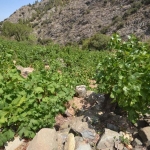
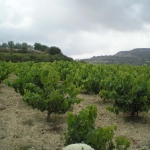
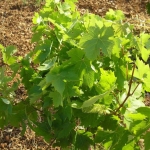
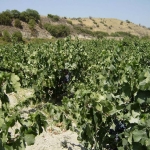

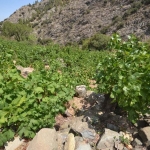
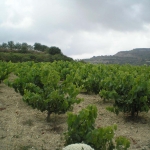
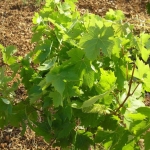
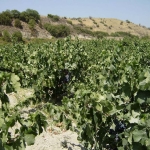
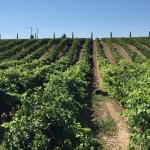
Useful Information
| Omodos Community Council | 25422453 |
| President of the Community Council | 99605463 |
| Σ.Κ.Ε. | 25421043 |
| Timios Stavros Monastery | 25422833 |
| Museums | 25422668 |
| Central Cooperative of Omodos | 25422500 |
| District Elementary School Omodos | 25422536 |
| District Gumnasium/ Lyceum Omodos | 25421721, 25422330 |
| Regional Medical Center of Omodos | 25421254 |
| Priest Papaneofytos | 99482234 |
| Platres Police Station | 25813018 |
| Platres Fire Station | 25421180 |
| Platres | 25422625 |
| Postman George Constantinou | 99494259 |
| Transportation ΕΜΕL | 25954050 |
| Ambulance | 112 22887171 |
Regional Medical Center of Omodos
The District Health Centre of Omodos was founded around 1987 and its goal is to contribute to the development of medical services for the land-workers of Omodos and the surrounding areas. Efforts to create the District Health Centre had begun long before 1987, from a group of progressive people living in Omodos who had taken into consideration the provision of medical services to the people of Omodos and the people living in krasoxoria (wine-villages).
The difficulties that had to be faced were many and continuous. However, the aforementioned group’s will and determinacy as well as the whole community’s will played an important role in convincing the government to start realising the plan to build the Agricultural Sanitary centre. For this purpose, the community offered to the Medical Services the existing primary school as well as the adjacent space where the Community council was housed.
Once the primary school was suitably renovated, new rooms were built and the appropriate equipment was installed the centre started its operation in 1987. All efforts brought results, and the project was successfully completed and today it is an important asset to the Community. The District Health Centre is run by a medical administrator, a pharmacist and two nurses.
Today, the District Health Centre of Omodos provides medical services as well as First Aid services in case of emergencies to patients and in general to people living in Omodos and the surrounding areas of Vasa, (Koilaniou), Arsos, Potamos, Mallia and Vouni. All these services are provided with the help of an ambulance and volunteer drivers from the community.
Moreover, it provides medical services to students from the regional primary school, high school and Omodos Lyceum as well as to locals and tourists.
Panagiotis Socratous
Secretary of the Ecclesiastical Committee
Church of Holly Cross of Omodos
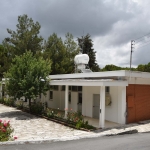

Central Cooperative Bank
The people of Omodos have always been interested in their village’s development. In 1928, for the first time, they decided to create the Co-Operative Bank of Omodos, having as their goal the promotion of economic interests and the service of its members.
The company had to face many difficulties throughout the years, especially during the post-war years. As a result, the dissolution of the company came about and people’s trust in it was shattered. However, people’s will was stronger than the problems faced, social and economic, especially with the dissolution of the company and so in August 1969 the creation of a new co-operative bank named “Timios Stavros” (Holly Cross) begun.
The constitution of the first committee of the co-operative bank included Mihalis Argirou who was president, and members Kostas Papagathoklis, Antonis Potamitis, Mihalis Markou and Charalambos Eugeniou. On the 10h of August 1969 and with a monthly wage of one pound, the first secretary of the company is assigned, Christakis Haholiades, who served until 1988. He was then succeeded by Mr. Marios Ioannides, who served for the next six years.
“Timios Stavros’s” help and the experiences gained from its long-term operation along with the hard work and personnel’s ethos, the good co-operation between its members and above all the establishment of good relations between the managers and the representatives of the company contributed to the company’s steady and climatic progress. Today the co-operative bank has produced remarkable and important work in its area and has contributed to the Omodo’s people prosperity.
The following have contributed to the company’s evolutional course:
- Purchase of new, modern offices that meet the demands of modern times
- Computerisation of the company’s work
- Enforcing the use current accounts with cheques
- Running a foreign currency service
- Administration of the company’s offices using the banking hours.
The company is optimistic about its future. Nowadays there are many efforts to join all the co-operative banks of the winter resorts in accord to the frame of the companies in Europe. These efforts are supported and promoted by the Superintendence and Development of co-operative companies Services and in general by the larger Co-operative movement.
Better days are expected to come as far as the co-operative banks are concerned. From the start of its operation, the following people have held the position of president at the co-operative bank “Timios Stavros”:
- 10/08/1969 – 17/08/1972 – Mihalis Argirou
- 18/08/1972 – 06/03/1977 – Antonis Potamitis
- 07/03/1977 – 14/12/1980 – Mihail G. Euriviades
- 15/12/1980 – 03/06/1984 – Irodotos Euthimiou
- 04/06/1984 – 25/05/1988 – Marios Ioannides
- 26/05/1988 – 28/06/2002 – Socrates I. Socratous
- 29/06/2002 – until today – Panagiotis Socratous
The committee constituted today has the following members:
Nicos Zinonos, Mihail Neocleous, Themistoklis Mihail and Periclis Charalambous.
Since January 1994, the company’s secretary is Mr. Evgenios Mihail and the secretary assistant since 2000 is Mrs. Grigoria Nicou.
Panagiotis Socratous
President of the co-Operative Company
“TIMIOS STAVROS” Omodos
Agrotourism / Tourism Development
If today Omodos has evolved -and still evolves -into a much frequented agro-tourism resort, this is admittedly due to the remarkable actions and the close co-operation of the Local Authorities, the Community Council, the Church Committee, the trusteeship of Omodos’s Co-operative Credit Society, the “Friends of Omodos” Association, and the village’s inhabitants and friends.
Very early on, in the 80’s, Omodos turns to its roots, its springs, pursuing its progress and its development in many sectors, including that of agro-tourism. It quickly understood the meaning of agro-tourism and it discovered that it was a new form of tourism, which helps the rural family and promotes Cypriot tradition. During the past few years, agro-tourism started being developed in Omodos by the people who were occupied with the grapevines and had traditional houses, which they turned into tourist quarters and others into souvenir shops, restaurants, and small taverns. In that way it managed to offer to the tourists the possibility of living quietly in nature -for a small period of time -close to the viticulturist and his / her agricultural tasks (pruning, tillage, gathering of grapes, making of wine, etc.), getting to know the village’s manners and customs, its folkloric art and tradition, tasting the traditional cuisine and produce. The inhabitants of Omodos managed to increase their income through utilising traditional quarters and offering viticulture produce that they themselves produced to the tourists, such as “palouze” (must jelly), wine, etc. Also, “arkatena” rolls (crunchy rusks with yeast) and items of local folkloric art, such as the renowned “pipila” (narrow-knit lace) of Omodos.
Furthermore, new families were given the opportunity to remain in the countryside, return to their roots, and find an occupation through keeping souvenir-shops, restaurants, taverns, wineries, tourists quarters, etc.
A person visiting Omodos has the ability to stay in the village in renovated, traditional houses and hostels. Today there are more than 40, fully-furnished apartments with a capacity of 140 beds -previously being storage areas that the viticulturists kept -and which are offered for rent to Cypriots and foreigners throughout the year.
Many souvenir-shops are located along the picturesque alleys and plenty of others surround the village’s vast, paved plaza, the visitor finding products of folkloric art, narrow-knit laces, embroideries, and other items in them.
Moreover, the visitor will see the village’s women, previously of all ages but today mainly elderly, gathering in the sunshine during the winter and in the nicest, shady part of the neighbourhood during the summer, needle in hand, making the famous, traditional narrow-knit lace that anyone can buy so as to decorate his / her furniture and other items. Today Omodos still is one of the most significant centres producing narrow-knit lace. About sixty women are occupied with its production.
Furthermore, it has 14 graphic taverns, restaurants, and coffee-houses that serve breakfast and traditional dishes.
There are four wine-producing Factories and four families are occupied in those. In the picturesque alleys and the plaza, the visitor may come across workshops that manufacture glass (vitreau), copper engravings, and icons.
The visitor can also buy the celebrated “arkatena” rusks, which are made in the five ovens that the village has, as well as aromatic, tasty, sweet wines from the three liqueur stores and wineries.
The future of Agro-tourism in Omodos is bright, because of the many infrastructure projects, the other accommodations / facilities that exist, and the rich cultural heritage that the older generations bequeathed, which we tenaciously try to preserve.
At the same time, the inhabitants of Omodos also take initiatives and have ideas that promote the development of Agro-tourism. By proceeding with Agro-tourism, the development of the village will advance further more. Basically, it could b said that Agro-tourism contributed -and will contribute -to the development and revitalisation of the wine-producing village of Omodos.
Editing of text: Panayiotis Socratous
Secretary of ecclesiastical committee
Community Park

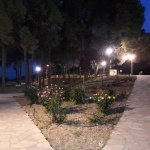
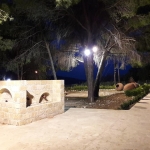

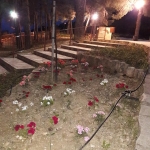
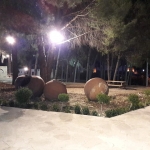

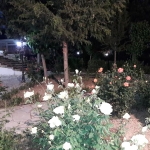

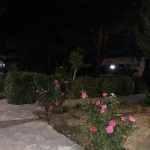


Publications
Business Directory
RESTAURANTS
| Α/Α | BUSINESS NAME | OWNER’S NAME | TELEPHONE |
| 1 | OMODOS TAVERN | IASON G. CHARALAMBOUS | 99623196 |
| 2 | ΑΜPELOTHEA ΤΑVERN | FILIPPOS MAKARITIS | 99652093 |
| 3 | THEMISTOCLIS TAVERN | THEMISTOCLIS MICHAEL | 99405297 |
| 4 | ΚΑΤOI | CHARALAMBOS PERICLEOUS | 99674444 |
| 5 | ΜΑΚRYNARI ΤΑVERN | POLYS MAKARITIS | 99780023 |
| 6 | MR GIANNIS TAVERN | STAVROS ZENONOS | 99308555 |
| 7 | BLACK GOOSE TAVERN | POLYS MAKARITIS | 99780023 |
| 8 | «ΚΑΜΑRΑ» TAVERN | KAMELIA IOANNOU | 99153926 |
| 9 | «THΕΜΕLΙΟ» TAVERN | THEODOTOS THEODOTOU | 99459306 |
COFFEE SHOPS
| Α/Α | BUSINESS NAME | OWNER’S NAME | TELEPHONE |
| 1 | COFFEE SHOP «ΤΗΕ TRADITION» | ELENI CHRISTOU | 99342826 |
| 2 | COFFEE SHOP G. ATHINODOROU & SONS LTD | CHARILAOS ATHINODOROU | 99696031 |
| 3 | COFFEE SHOP «THE BEAUTIFUL CYPRUS» | ARGYRIS ARGYROU | 99311768 |
| 4 | SNACK – BAR ΠΛΑΤΕΙΑ | CHARALAMBOS GEORGIOU | |
| 5 | HUNTING ASSOCIATION THE HOLY CROSS | GEORGE GEORGIOU | 96569324 |
| 6 | COFFEE SHOP « ΤΕΜPΕLCHΑΝΙΟΝ» | GEORGE GEORGIOU | 96569324 |
| 7 | COFFEE SHOP BLACK GOOSE | CONSTANTINOS MAKARITIS | 99780023 |
| 8 | GEORGE’S DAUGHTER&SON | ANDREA NICOLAOU | 99026849 |
| 9 | CREPERI 50 ΑPΟCHROSEIS CREPAS | CHARALAMBOS ARGYROU | 99483704 |
KAVA
| Α/Α | BUSINESS NAME | OWNER’S NAME | TELEPHONE |
| 1 | KAVA POTOU ΟΙΝΟU GΗS | ARGYRIS ARGYROU | 99311768 |
WINERIES
| Α/Α | BUSINESS NAME | OWNER’S NAME | TELEPHONE |
| 1 | OLYMPUS WINERIES | HATZIPAVLOU | 25573391 |
| 2 | MARION WINERY | ΜΑRIOS IOANNIDES | 99556630 |
| 3 | ΚΤIMA Η. ΗRODOTOU | ΗRODOTOS ΗRODOTOU | 99479547 25422700 |
| 4 | ΖΗΝΩΝ WINERY | NICOS ZENONAS | 99492979 |
| 5 | PROPHITIS ELIAS WINERY | CHARILAOS ATHINODOROU | 99696031 |
| 6 | ΟΙΝΟU GΗ WINERY |
MUSEUM OF WINE
| Α/Α | BUSINESS NAME | OWNER’S NAME | TELEPHONE |
| 1 | LINOS OF CHARILAOS | CHARILAOS ATHINODOROU | 99696031 |
WINE WAREHOUSE-SOUVENIR SHOP-PRIVATE MUSEUM
| Α/Α | BUSINESS NAME | OWNER’S NAME | TELEPHONE |
| 1 | «SOCRATIS HOUSE» | CHRYSOULA TSITSI | 99405297 |
| 2 | EXHIBITION-SHOP OF WINES ZENON | NICOS ZENONOS |
BAKERIES
| Α/Α | BUSINESS NAME | OWNER’S NAME | TELEPHONE |
| 1 | «FOTEINI» BAKERY | STAVROULLA DEMOU | 99621691 99515140 |
| 2 | G.G TRADITIONAL FOOD PRODUCTS LTD | GIANNIS GEORGIOU | 99484824 |
| 3 | GEORGES BAKERY | CHRYSTALA G. NICOLAOU | 99411207 |
PRATIRIO KOULOURI
| Α/Α | BUSINESS NAME | OWNER’S NAME | TELEPHONE |
| 1 | ELENI M. GEORGIOU | GIANNIS GEORGIOU | 99484824 |
CONFECTIONERY
| Α/Α | BUSINESS NAME | OWNER’S NAME | TELEPHONE |
| 1 | GEORGE’S DAUGHTER&SON | ANDREA NICOLAOU | 99026849 |
HAGIOGRAPHY SHOP
| Α/Α | BUSINESS NAME | OWNER’S NAME | TELEPHONE |
| 1 | HAGIOGRAPHY LABORATORY | MAROULLA I. ARISTOU | 99340569 |
BANK ACCOUNT SHOP
| Α/Α | BUSINESS NAME | OWNER’S NAME | TELEPHONE |
| 1 | CO-OPERATING CENTRAL BANK | CO-OPERATING CENTRAL BANK | 25422500 |
KIOSK
| Α/Α | BUSINESS NAME | OWNER’S NAME | TELEPHONE |
| 1 | RIKOMAP LTD KIOSK | GEORGE A. GEORGIOU | |
| 2 | «SΤΑVRΟΣ» KIOSK | STAVROS PAPADEMAS |
LABORATORY OF CYPRUS CEMENTS
| Α/Α | BUSINESS NAME | OWNER’S NAME | TELEPHONE |
| 1 | LABORATORY OF CYPRUS CEMENTS | STAVROS SOCRATOUS | 99376765 |
JEWELLER’S SHOP
| Α/Α | BUSINESS NAME | OWNER’S NAME | TELEPHONE |
| 1 | LITHOS BY STAVRI | STAVRI CONSTANTINOU | |
| 2 | ANONYMOUS BUT FAMOUS | STAVROULLA CHRISTOU | |
| 3 | SANTA ALONI COTTAGE LTD | MEROPI ZENONOS |
SOUVENIR SHOP
| Α/Α | BUSINESS NAME | OWNER’S NAME | TELEPHONE |
| 1 | TRIKLINOS | CHRYSTALLA T. PANAYIOTOU | 99652819 25422360 |
| 2 | LINOS Α΄ | ELENA G. CONSTANTINOU | 99494259 |
| 3 | DEPSI GLASS A΄ | DIMITRIS PSILOGENIS | 99638617 |
| 4 | DEPSI GLASS Β΄ | DIMITRIS PSILOGENIS | 99638617 |
| 5 | P.F.P. LEATHER GOODS | PAMAGIOTIS PAPADAKIS | |
| 6 | SOUVENIR | KAITI TAMANI | |
| 7 | SOUVENIR ΤΟ ΜΑΚΡΥΝΑΡΙ | ELENI MAKARITI | 99342826 |
| 8 | SOUVENIR | ERASMIA PERDIKI | |
| 9 | SOUVENIR | GEORGE A. GEORGIOU | 99554732 |
| 10 | SOUVENIR | LOUCAS STAVROU | 96219351 |
| 11 | SOUVENIR | GIANNOULLA IOANNIDOU | 99556630 |
| 12 | SOUVENIR | MEROPI ZENONOS | 99557824 |
| 13 | SOUVENIR Α΄+Β΄ | ANDRONICOS Χ΄΄ ΑDAMOU | |
| 14 | ANDRI LOUCA | ANDRI LOUCA | |
| 15 | TROODIA STAVRINIDOU | TROODIA STAVRINIDOU | |
| 16 | HOMODEUS ART&HANDCRAFT GALLERY | SOTIA YIANGOU | 99536765 |
| 17 | ΜΑLΑ HANDICRAFTS | EVGENIA VASILITZIA MALA |










